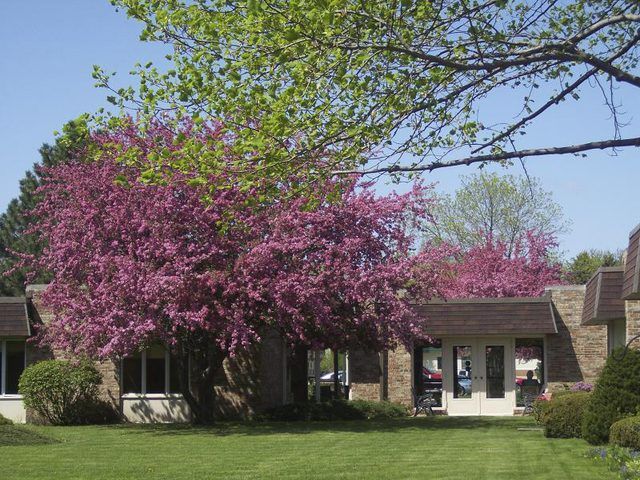Bulbs
Flower Basics
Flower Beds & Specialty Gardens
Flower Garden
Garden Furniture
Garden Gnomes
Garden Seeds
Garden Sheds
Garden Statues
Garden Tools & Supplies
Gardening Basics
Green & Organic
Groundcovers & Vines
Growing Annuals
Growing Basil
Growing Beans
Growing Berries
Growing Blueberries
Growing Cactus
Growing Corn
Growing Cotton
Growing Edibles
Growing Flowers
Growing Garlic
Growing Grapes
Growing Grass
Growing Herbs
Growing Jasmine
Growing Mint
Growing Mushrooms
Orchids
Growing Peanuts
Growing Perennials
Growing Plants
Growing Rosemary
Growing Roses
Growing Strawberries
Growing Sunflowers
Growing Thyme
Growing Tomatoes
Growing Tulips
Growing Vegetables
Herb Basics
Herb Garden
Indoor Growing
Landscaping Basics
Landscaping Patios
Landscaping Plants
Landscaping Shrubs
Landscaping Trees
Landscaping Walks & Pathways
Lawn Basics
Lawn Maintenance
Lawn Mowers
Lawn Ornaments
Lawn Planting
Lawn Tools
Outdoor Growing
Overall Landscape Planning
Pests, Weeds & Problems
Plant Basics
Rock Garden
Rose Garden
Shrubs
Soil
Specialty Gardens
Trees
Vegetable Garden
Yard Maintenance
Crabapple Tree Identification
Crabapple Tree Identification. Flowering crabapples (Malus spp.) are ornamental trees that produce showy blossoms and brightly colored fruits. Their fruits usually aren't sold by grocery stores. The characteristics of crabapple trees make them popular among gardeners for decorating and providing shade. Their distinct features are useful for...
Flowering crabapples (Malus spp.) are ornamental trees that produce showy blossoms and brightly colored fruits. Their fruits usually aren't sold by grocery stores. The characteristics of crabapple trees make them popular among gardeners for decorating and providing shade. Their distinct features are useful for identifying the trees. Crabapples are deciduous and, depending on their species and variety, are hardy in U.S. Department of Agriculture plant hardiness zones 3 through 8.
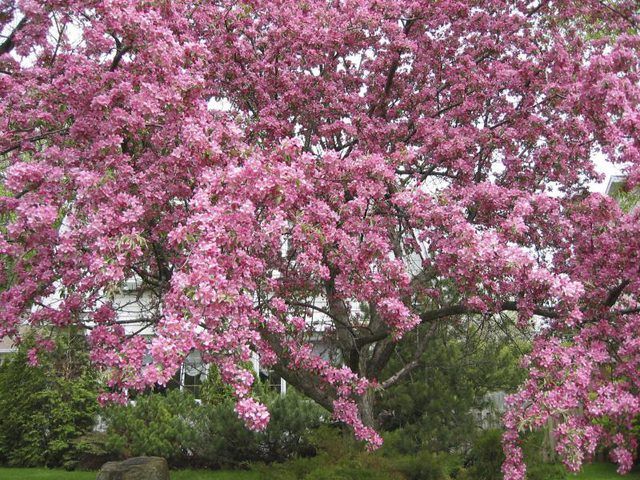
About 30 crabapple species and hundreds of varieties exist, which makes identifying a particular crabapple tree difficult. Common species include Japanese flowering crabapple (Malus floribunda), Sargent crabapple (Malus sargentii) and tea crabapple (Malus hupehensis). Japanese flowering crabapple and Sargent crabapple are hardy in USDA zones 4 through 7, and tea crabapple is hardy in USDA zones 4 through 8. Crabapples grow in residential and commercial landscapes from New England to parts of California. The trees require full sun for healthy growth. They can adapt to a variety of soil conditions but do best in well-drained, moist soil.

Crabapple stems have an alternate leaf arrangement, with the leaves not directly opposite each other on the stems. The leaves develop an oval shape and serrated edges. Some crabapple species have green leaves while others have leaves that are shades of purple. Crabapple flowers develop during spring and are pink, red or white. The flowers tend to be small but bountiful, making the trees colorful sights during spring. In addition, the flowers have a subtle, sweet scent. The bark of crabapples tends to be grayish brown and scaly, making it simple to peel off. Crabapple trees generally grow 15 to 25 feet tall with an equal canopy width, providing gardeners with mid-size trees that do not tower over their homes. The trees grow 8 to 10 inches per year, depending on the species or variety.
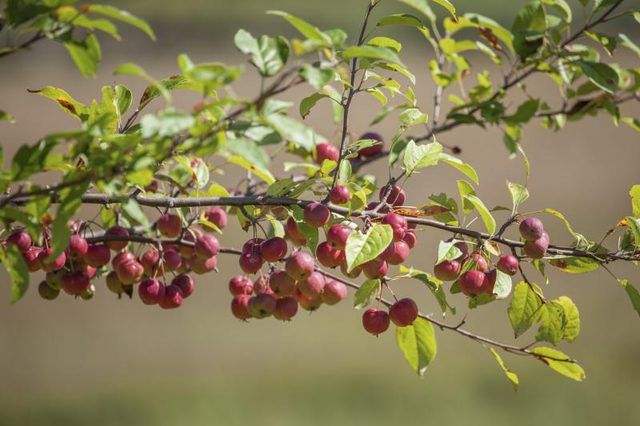
The fruits of a crabapple tree are green, red or yellow at maturity, with the color varying among the species and varieties. Each fruit tends to be under 2 inches in diameter. The fruits of some kinds of crabapples fall when ripe while others stay on their trees through winter. Varieties that produce edible fruits include "Dolgo" (Malus x "Dolgo") and "Donald Wyman" (Malus "Donald Wyman"), both of which are hardy in USDA zones 4 through 8. Most crabapples' fruits are not edible directly from the trees; they need to be cooked and sweetened to be palatable. Some people use the fruits to make preserves and cider.
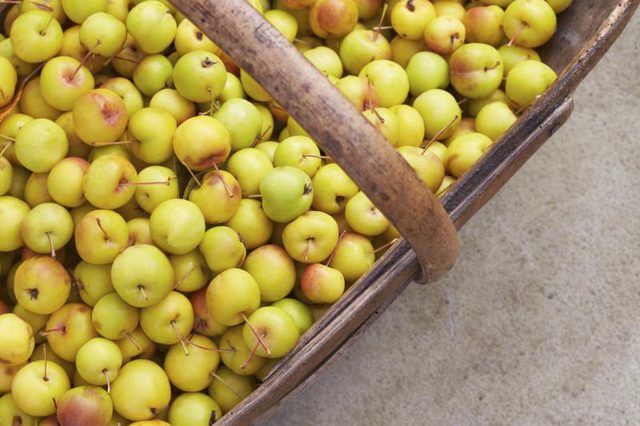
Crabapple trees are not resistant to pests. Pests that attack the trees include the Japanese beetle, borers, mites and aphids. Also, mice and rabbits chew on the trees' bark during winter. The trees are also susceptible to powdery mildew, scale, fire blight, rust, apple scab, canker and leaf spot. Fire blight is a serious problem that can destroy affected trees. Certain crabapple cultivars, however, are resistant to some diseases.
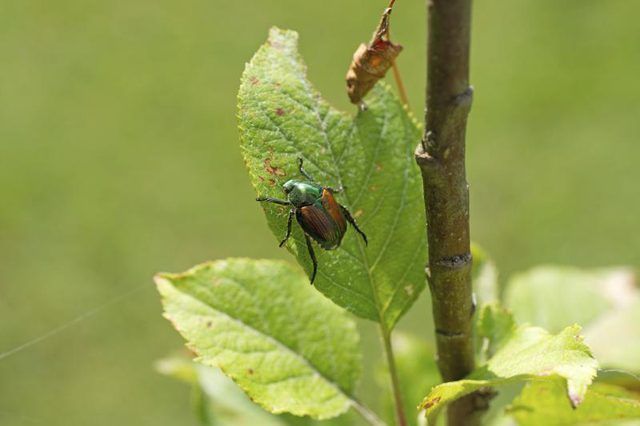
If you want to propagate a crabapple tree, the best methods for growing a new plant include budding and grafting. Trees also can be grown from softwood cuttings. Because of their size and abundant foliage, crabapple trees are useful for privacy yet do not grow tall enough to interfere with overhead utility wires. Planting rows of the trees will shield your property from the view of passersby.
